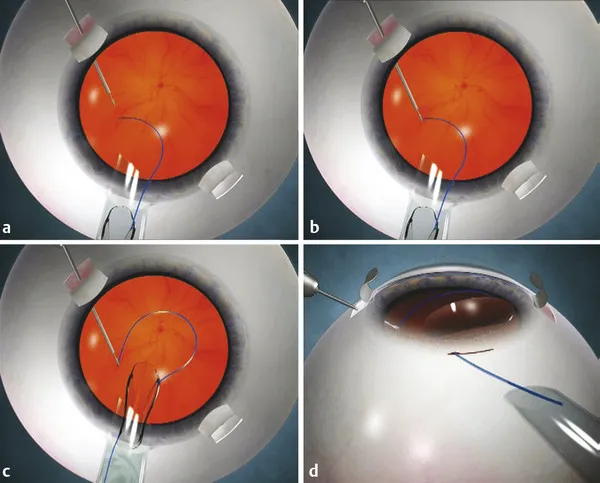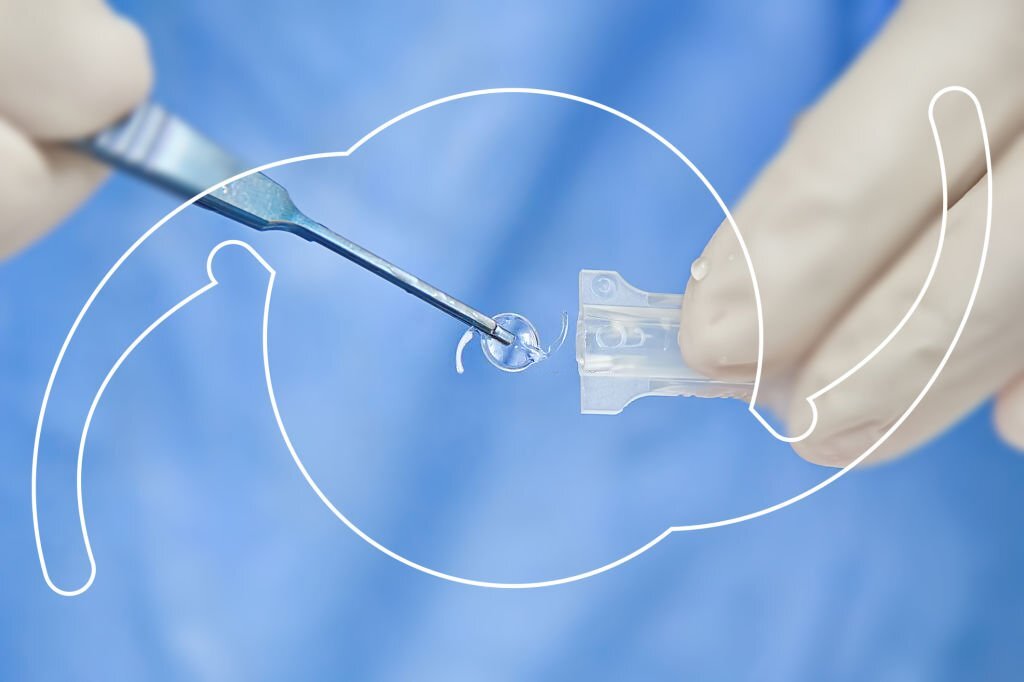Glued IOL
When the capsular support is not present, this method can be used to put the intraocular lens in the natural anatomical position and restore normal optics to the eye.

GLUED IOL:
What is GLued IOL?
It is a procedure in which glue is used to place the intraocular lens in the normal anatomical position when the capsular support that is needed to implant it is absent. As a result, the optics of the eye are returned to their original state.
Indications of IOL:
Trouble seeing at night.
Traumatic Cataract, Aphakia, any complications during Cataract surgery, Subluxated Cataracts, Subluxated or Dislocated IOLs.
An Overview of Intraocular Lenses
Intraocular lenses, also known as IOLs, are used to replace your eye’s natural lens in order to provide a curve that is consistent from the optical centre to the eye’s edges, also known as the periphery. There are three different kinds of intraocular lenses (IOLs) that can be used. These include monofocal, multifocal, and toric IOLs.
Monofocal IOLs
One of the most common methods of correcting vision impairment is by inserting a monofocal intraocular lens. One and only focus can be honed with these lenses (near, far, or intermediate). One thing it isn’t utilised for is correcting astigmatism.
It is normal practise to utilise monofocal IOLs to enhance distance vision. Even yet, “reader” glasses may be required for activities requiring near-sighted vision. However, monofocal IOLs may work well for those who:
- Cataracts in both the eyes
- These IOLs can be used for macular degeneration, which is an eye condition that creates blurry vision.
- A limited budget which is mostly covered by the insurance plan.
Multifocal
The most practical type of intraocular lens is the multifocal lens since it can correct near, intermediate, and farsightedness simultaneously. Most multifocal IOLs necessitate a sufficient length of adaptation because of the brain’s need to be educated to properly process the varying degrees of magnification required for near and far vision.
These days, many people use multifocal lenses, which offer two focus lengths for each eye (near and distant). The brain routinely integrates and alters both hemifields to create a single image. As it calls for the use of both eyes independently, it is not a viable solution for everyone.
Multifocal lenses could be the answer to the following issues:
- If you are suffering from age-related farsightedness or presbyopia.
- If you want to free yourself of contact lenses and glasses.
- If both your eyes have the good visual capability.
- This setting, however, may cause issues like depth perception and problems with night vision.

Toric
Distance vision and astigmatism correction are both aided by toric lenses. Astigmatism, caused by a cornea with an irregular shape, is a common cause of vision impairment. Astigmatism causes an optical imbalance, but toric IOLs are made to fix it.
Below we have mentioned a few ways in which toric lenses are different from multifocal and monofocal lenses:
- Toric lenses contain specific peripheral indicators that help with accurate astigmatism correction.
- Toric lenses do not raise the risk of complications that arise from cataract surgery (such as eye inflammation or light sensitivity)
- On the other hand, it is imperative to keep in mind that a misaligned toric IOL can result in hazy vision that is difficult to rectify with glasses.
Phakic Lenses
Instead of intraocular lenses, phakic lenses use intracorneal lenses. When a patient wears Phakic ICLs, their native lens remains unaltered. To treat moderate to severe myopia, surgeons may implant a clear lens called an intraocular lens (IOL) beneath the iris, in front of the eye’s natural lens.
This implant directs light where it needs to go (the retina) without the need for glasses or contact lenses. Phakic ICLs are an alternative to laser eye surgery for people who are too nearsighted for photorefractive keratectomy or LASIK.
Exactly what are the benefits of glued IOLs?
- The IOL is placed in the normal anatomical position.
- The stability of the IOL is good.
- This procedure brings the eye back to 90% normal
